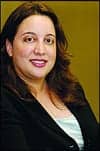
Additionally, the data indicated that 11.2% of children under 18—8.3 million children—did not have health coverage in 2005.
This information should be of great concern to all health care professionals, including those in the hearing care field, particularly the audiologists and dispensers who will be prescribing and providing a hearing device to a patient diagnosed with hearing loss.
If one such patient is among the 46 million people in this country who do not have health insurance, it would be a fairly safe assumption that he or she probably would not have the disposable cash to cover an out-of-pocket expense such as a hearing aid. With the devices’ cost ranging anywhere from just less than $1,000 to upward of thousands of dollars—particularly if someone needs to be fitted binaurally—how then will the patient pay for the hearing aid?
Even when a patient has insurance, not all policies cover hearing aids, or even the batteries used to power them. While some insurance policies do cover at least part of the cost of a hearing aid, it is often just a fraction of the cost, and coverage can vary from state to state.
So how do hearing health care professionals ensure that their patients obtain the devices they need after they are diagnosed with hearing loss? Audiologists and hearing aid dispensers need to step in where insurance companies have failed by offering financing plans to their patients. Various plans are available nowadays, from no- to low-interest financing, to those that allow payments to be spread out anywhere from a few months to a few years.
There are even some hearing aid manufacturers that have stepped up to try to assist patients with obtaining the hearing devices they need. Certain manufacturers now offer payment plans through audiologists’ and dispensers’ offices. Of course, a patient who selects this option must purchase that manufacturer’s device, but at least the patient has another option available to him or her.
It is not enough to just prescribe and dispense the product if the patient cannot afford it in the first place. In the long run, offering financing plans will benefit an audiologist’s or dispenser’s practice as well. After all of the time spent during the testing, fitting, and counseling process, if a patient decides against purchasing a hearing aid simply because he or she cannot afford it, it is a disservice to that patient and a poor business decision for the hearing care professional’s practice, if it was all for nothing.
Do you provide financing plans to your patients who need a hearing aid? Visit Hearing Products Report’s Web site (www.hearingproductsreport.com) to participate in our Web Poll, which asks that very question. The site is also the place to visit to find out more about some of the financing plans that are available to the industry by checking out HPR’s products listings.


